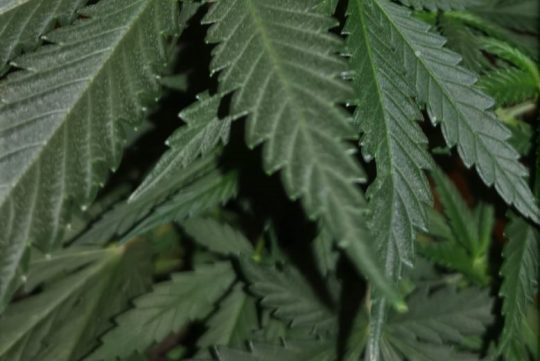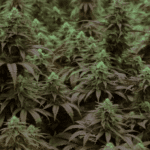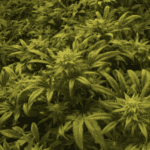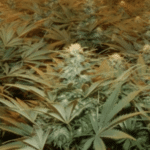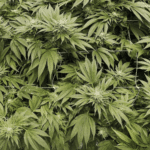The Basics of Aquaponics
Some of you may be scratching your head when you read that aquaponic systems require water, bacteria, and fish. However, you’ll understand why these three are needed to produce a healthy cannabis crop shortly.
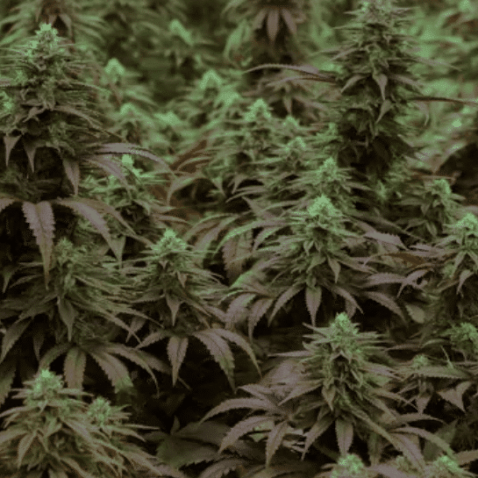
First, aquaponics is the combination of aquaculture and hydroponics. These two systems are fused into a single unit to work as a symbiotic system.
Aquaponics works by creating a closed-loop system that can support itself without human intervention for a long period of time. However, it does require a specific amount of upkeep to ensure that the entire system runs properly – especially when it comes to growing cannabis.
Aquaponics takes advantage of multiple by-products to support each living thing within the system.
The cannabis plants rely on the nitrifying bacteria to break down the excretions of the fish as a food source, and the fish rely on the plants to break down their waste that is potentially toxic in large concentrations.
Lastly, water is pumped from the fish chamber to the plant chamber to ensure there’s enough time to keep both environments satisfied. As the water moves from the plant reservoir back to the fish tank, it goes through a filtering process.
As you can see, aquaponic systems rely on multiple factors that are more complicated to control compared to conventional agricultural techniques, such as hydroponics or soil-based methods.
Although there are many moving parts that need to be considered when growing in aquaponics systems, the potential for a thriving crop is very high.
Aquaponic Systems
Now, let’s take a look at the various parts that make up the aquaponic system. Each component is necessary to ensure that the entire system runs smoothly. Considering three living organisms need their own specific environment, it’s essential to understand how each part works.
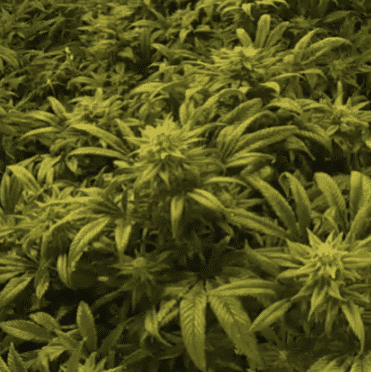
The Rearing Tank
The rearing tank is the name for the reservoir that contains your fish. The rearing tank is separated from the hydroponics subsystem and is connected by two different sumps that pump water in and out.
The fish eat, excrete ammonia, grow, and reproduce within the rearing tank. Depending on your needs, you may cultivate fish for consumption from the rearing tank as well.
The Settling Basin
The settling basin is a filter that catches uneaten food and other biofilms that can clog sumps or allow hazardous microbes to reproduce. The last thing a cultivator wants is for their sumps to become clogged or for their fish to become poisoned.
Biofilter
The biofilter is the bridge, so to speak, for the interaction between fish excretion and plant roots. The biofilter contains nitrification bacteria, which convert the toxic ammonia that fish excrete into nitrates, which are consumed by the cannabis plants.
If it wasn’t for the nitrification bacteria, the fish would eventually poison themselves, and the cannabis plants wouldn’t have a nitrogen source for growth.
Hydroponics Subsystem
The hydroponic subsystem is the reservoir where the cannabis plants grow. It’s within this unit that the roots are exposed to nitrates that have been converted via the nitrification bacteria.
Depending on the unit, the cannabis plants are suspended in mesh containers where their roots are submerged in the nutrient solution.
Sump
The sump is a pump, which continuously moves water from the rearing tank into the hydroponic subsystem. From the hydroponic subsystem, the water moves through another sump that contains a filter, which leads back into the rearing tank.
The Living System
Aquaponic systems are composed, in general, of three living organisms. Plants, fish, and nitrifying bacteria are the primary living components that make up the living system of aquaponic units.
Let’s take a look at each.
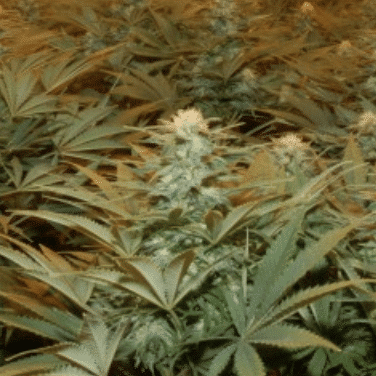
Fish
There are many types of fish that are well-suited for an aquaponics system. Tilapia, goldfish, catfish, trout, and koi are common fish that are used within aquaponic grow systems. However, not all of these fish are edible.
Nitrification Bacteria
There are multiple types of nitrifying bacteria, such as Nitrosomonas spp. And Nitrobacter spp. Nitrifying bacteria rely on fish waste to live, and in return, they produce a usable form of nitrates that plants can readily uptake.
Cannabis Plants
Whether you decide to grow an Indica, Sativa, or hybrid cannabis strain – any cannabis plant is suitable for aquaponics. However, it’s essential that you allow trial and error to guide you during your first attempt at aquaponics.
Additional Nutrient Considerations
Lastly, aquaponics focuses primarily on nitrates as the primary food source for plants.
Many plants, such as herbs and flowers, have a low nutrient-requirement, which makes aquaponics suitable.
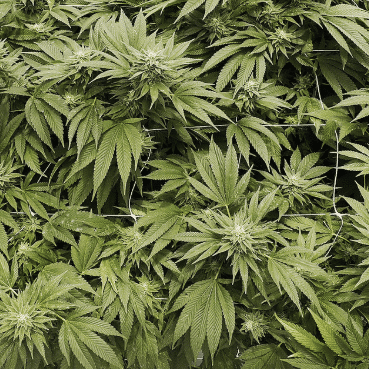
However, cannabis plants have incredibly high nutrient needs when compared with other plants. Furthermore, cannabis requires all macro and micronutrients to remain healthy and productive throughout its lifecycle.
This means that you’ll need to supplement your cannabis plants with additional nutrients that can’t be found from fish and nitrifying bacteria.
However, cultivators cannot simply mix additional N-P-K rich nutrients into the hydroponic subsystem without risking the health of the fish population.
If you invest in a heavy-duty filter that can clean all nutrients before being sent back into the rearing tank, then it’s possible to do so.
Luckily, cannabis plants can be foliar fed, which means that you can mix the nutrient solution and spray it directly on the cannabis plant leaves.
Summary
Aquaponics offers beginners and professionals alike a unique opportunity to grow cannabis sustainably. By working symbiotically with multiple organisms, aquaponics reduces the overall cost of nutrients and water.
Share the Love
If you found this post useful, please let others know about it by sharing it.
